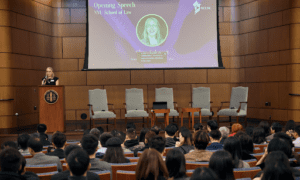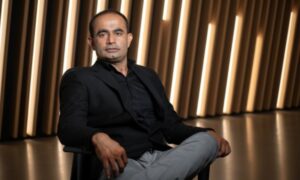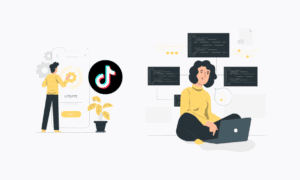Tejas Padliya stands at the forefront of technological innovation, wielding his expertise in Artificial Intelligence (AI) to forge pathways toward a more inclusive society. As a Principal Software Engineer at Roche in San Francisco, and an aspiring entrepreneur, Tejas has carved a niche for himself in the tech world.
His academic journey, crowned with a Master of Science in Computer Science from Rochester Institute of Technology, laid a robust foundation for his specialization in AI. Tejas’ career is a testament to a relentless pursuit of knowledge, marked by participation in industry conferences, workshops, and online courses that continuously expand his professional horizon.
Beyond his impressive technical acumen, Tejas harbors an entrepreneurial spirit and a vision to employ his skills for societal benefit. His aspirations are not just confined to business success but extend to impactful contributions that can transform industries and uplift communities.
Let’s learn more about Tejas’ professional journey today.
Real-life and community impact of AI on accessibility
At the core of Tejas’ work is a firm belief in the transformative power of AI technologies to fundamentally improve accessibility for people with disabilities. His development of gesture recognition based communication systems allows individuals with mobility impairments or conditions like dyslexia to use voice commands, eliminating the need for traditional typing and offering greater flexibility.
Tejas also combines his research with a facial expression recognition system designed to aid individuals with cognitive or neurological disabilities, such as autism spectrum disorder (ASD). This system, as described by Tejas, “interprets and analyzes the facial expressions of users,” providing essential real-time feedback on emotional cues to help improve their social interactions and communication skills.
According to Tejas, these “allow users to control devices, navigate interfaces, and access information with greater ease and flexibility.” This is especially beneficial for individuals with motor disabilities, offering new ways to interact with digital devices.
On the community front, Tejas underscores the importance of documenting case studies and stories to demonstrate the impact of accessibility tools. By tracking these narratives, he can highlight the improvements in accessibility and quality of life, guiding further innovation to meet the evolving needs of those who benefit from these AI solutions.
The Inspiration behind AI accessibility
The inspiration behind Tejas’ focus on employing AI for disability support emanates from both professional recognition of AI’s potential and a personal commitment to societal betterment.
“At one of the AI conferences I attended in 2022, researchers demonstrated AI-based solutions for identifying cancerous growths in CT scans,” Tejas remarked, underscoring AI’s revolutionary impact on healthcare. His involvement in community projects addressing poverty, crime, and homelessness has further deepened his resolve to leverage technology for social good.
Tejas’ vision is crystallized through his professional journey in software engineering, where significant advancements in machine learning and natural language processing have unveiled new horizons for aiding people with disabilities. His endeavors encapsulate a blend of technical prowess, a passion for social change, and an entrepreneurial spirit, all aimed at catering to the needs of individuals with disabilities through innovative AI applications.
Designing AI for accessibility and overcoming challenges
To design AI technologies for accessibility, Tejas focuses on universal design principles to ensure his products meet the needs of a diverse range of users. “Building highly accessible products involves incorporating principles of universal design from the outset,” he says, which ensures compatibility with assistive tools like screen readers, voice recognition systems, and alternative input devices. This approach allows his AI-driven solutions to work effectively for a broad range of users with varying abilities.
User customization is another key aspect of Tejas’ approach to accessibility. He encourages users to personalize their interfaces by adjusting font size, color contrast, and keyboard shortcuts to suit their preferences. This flexibility makes his products more user-friendly and adaptable to different needs. He also incorporates continuous testing and user feedback, noting that it is a continuous process of testing products and iterating them incorporating user feedback.
Challenges in integrating AI technologies for accessibility are not uncommon. One of the main hurdles, Tejas points out, is training AI models on “datasets that are comprehensive and inclusive of all user groups, particularly individuals with disabilities.” This involves managing data from various sources to ensure representativeness and inclusion. Tejas also navigates ethical and legal considerations by conducting thorough risk assessments, consulting legal experts, and implementing appropriate safeguards and compliance measures. His commitment to ethical practices and social responsibility helps him create AI technologies that are accessible and reliable.
Incorporating user feedback to improve AI Tools
Tejas’ strategy for improving AI accessibility tools revolves around a “user-centered approach that prioritizes the needs and experiences of individuals with disabilities.” He explains that this involves continuous user engagement, where suggestions are integrated into the design and development process. Tejas incorporates feedback through regular updates and releases to improve the user experience based on what users find helpful.
In discussing the development of AI applications, Tejas emphasizes the importance of collaboration with accessibility experts to ensure that the technologies are user-friendly and accessible. He points out that working closely with experts in the field helps identify potential barriers and leads to the creation of more innovative solutions tailored to user needs. This approach not only enhances the functionality of AI technologies but also ensures they evolve based on real-world feedback, reflecting his commitment to continual improvement and user-centered design.
The future of AI accessibility
Tejas envisions a promising future for AI in enhancing accessibility for people with disabilities, driven by key technological advancements. He highlights Natural Language Processing (NLP) as a breakthrough that allows more accurate speech recognition, providing individuals with speech impairments a seamless way to interact with devices through voice commands. Similarly, computer vision advancements offer real-time image description and navigation assistance for those with visual impairments, significantly improving their ability to navigate and access digital content. Gesture recognition technology introduces new and intuitive interaction methods, catering to diverse user needs with tailored experiences.
Beyond these, Tejas is excited about context-aware computing, which “dynamically adjusts accessibility features based on user context.” This technology can customize experiences in real-time to suit individual requirements. Emotion recognition technology promotes empathetic interactions, especially for individuals with cognitive and emotional disabilities. Additionally, augmented reality (AR) and virtual reality (VR) create immersive experiences that expand communication and accessibility for those with sensory impairments. By leveraging these technologies, Tejas aims to “create innovative solutions that promote inclusivity and empower individuals with disabilities,” moving toward a more accessible and equitable digital future. He also sees great potential in integrating AI with the Internet of Medical Things (IoMT), which is already positively impacting consumer health applications.
Partnerships for AI-driven accessibility solutions
Tejas understands that partnerships are crucial to developing his early-stage AI-driven accessibility product. He emphasizes that these alliances provide a continuous process of testing and iterating, creating a solid foundation for product development. Among the strategic collaborations he considers vital are those with disability advocacy organizations like the American Association of People with Disabilities (AAPD) or the World Institute on Disability (WID), which offer critical perspectives on the requirements and preferences of individuals with disabilities. These groups also help with product testing and gathering user feedback to ensure the final product meets user needs.
Tejas also identifies academic and research institutions as valuable partners due to their robust networks involving individuals with disabilities. These collaborations provide access to specialized knowledge and resources for AI-based accessibility tools. Additionally, technology accessibility forums like the W3C Accessibility Community Group and the A11y Slack community offer platforms for collaborative exchanges, where diverse feedback is gathered.
Regulatory bodies like the US Department of Justice’s Disability Rights Section play a key role in ensuring compliance with legal standards. Specialized nonprofit organizations, such as the National Federation of the Blind (NFB) or the National Association of the Deaf (NAD), contribute a deeper understanding of distinct community needs, aiding in comprehensive testing and validation of AI solutions. These partnerships lay the groundwork for effective and compliant AI-driven accessibility solutions.
In Tejas’ narrative, one finds a compelling intersection of technical mastery, purpose-driven innovation, and ethical engagement—a trinity that signifies a promising and inclusive future for accessibility technologies. Through his endeavors, Tejas not only illuminates the path toward a more accessible world but also embodies the ethos of technology serving the common good, making him a true pioneer in the field of computer science and accessibility.



































